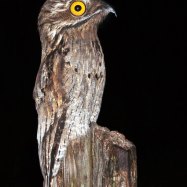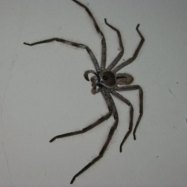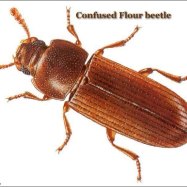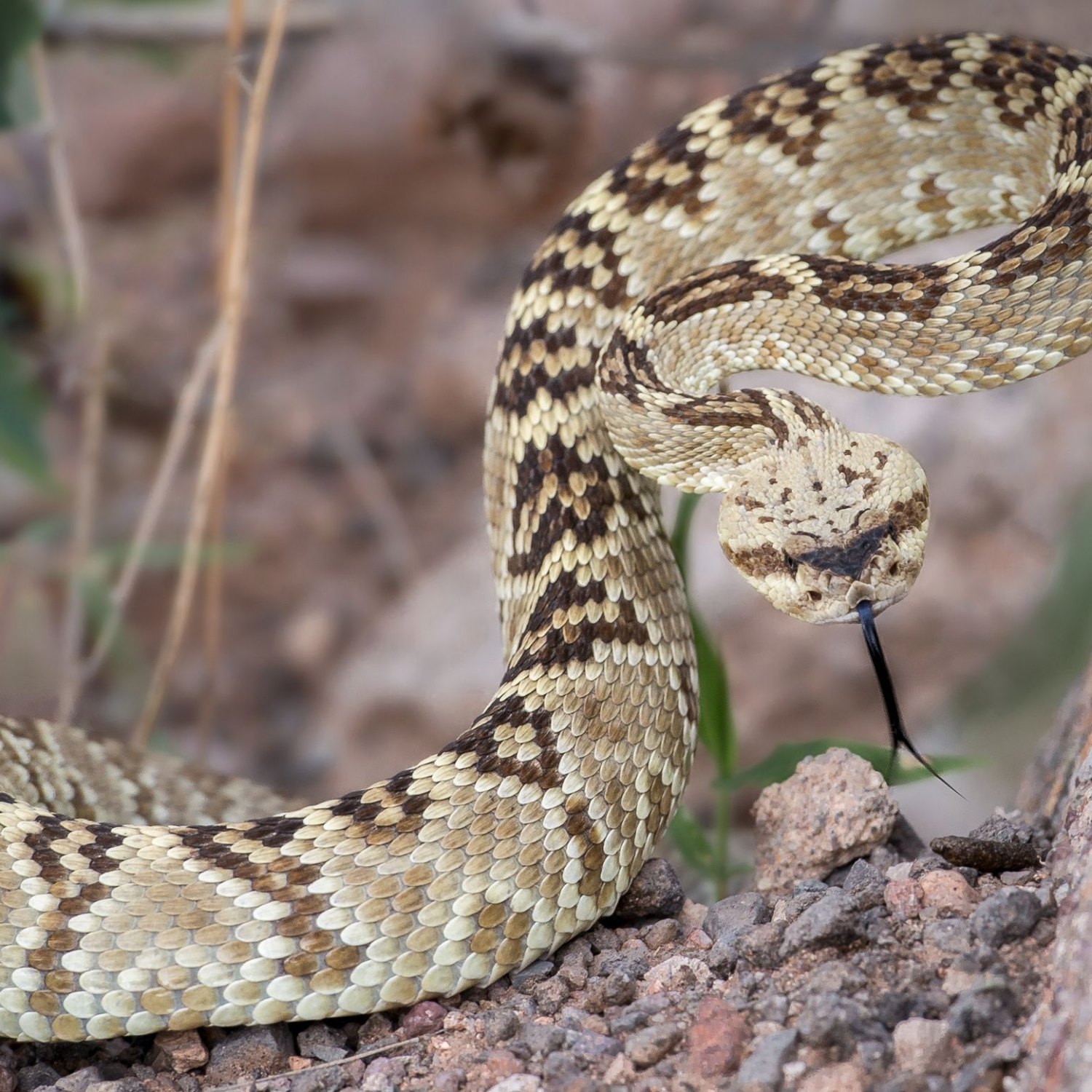
Ornate Black Tailed Rattlesnake
2.5 to 3.5 feet (0.7 to 1 meter)
The Ornate Black Tailed Rattlesnake is a stunningly beautiful species found in Arizona, New Mexico, Texas, and parts of Mexico. With a length of 2.5 to 3.5 feet, it belongs to the Viperidae family and has a thick, cylindrical body. Beware of its venomous bite!
Animal Details Summary:
Common Name: Ornate Black Tailed Rattlesnake
Kingdom: Animalia
Habitat: Deserts, grasslands, scrublands
Unveiling the Stunning Beauty and Deadly Nature of the Ornate Black Tailed Rattlesnake
Rattlesnakes are undoubtedly some of the most intriguing and talked-about animals in the world. With their venomous bite and unique rattling sound, they have captured the attention of humans for centuries. Among the many species of rattlesnakes, the Ornate Black Tailed Rattlesnake (Crotalus ornatus) stands out with its stunning beauty and intriguing nature.Native to the southwestern United States and northern Mexico, this snake is not only a striking sight to behold but also a feared predator in its natural habitat Ornate Black Tailed Rattlesnake. From its physical appearance to its hunting techniques, there is no denying that the Ornate Black Tailed Rattlesnake is a creature worth learning more about.
Let's take a closer look at the unique features and behavior of this captivating species.
The Classification and Geographic Range of the Ornate Black Tailed Rattlesnake
Before diving into the details of this fascinating creature, let's first understand its classification and geographic range. As a member of the Animalia kingdom, it belongs to the Chordata phylum and Reptilia class. It falls under the Squamata order and Viperidae family, which is known for its venomous snakes.The Ornate Black Tailed Rattlesnake is commonly found in the deserts, grasslands, and scrublands of the southwestern United States and northern Mexico. Its range includes the states of Arizona, New Mexico, Texas, and the Mexican states of Chihuahua, Coahuila, Durango, and San Luis Potosí.
It is interesting to note that this species is not exclusive to one country, making it unique and widely studied by scientists and researchers from both the United States and Mexico.
The Physical Characteristics of the Ornate Black Tailed Rattlesnake
One of the first things that draw attention to this species is its striking appearance Old House Borer. As the name suggests, the Ornate Black Tailed Rattlesnake is known for its ornate coloration and long black tail. However, its overall coloration can vary from individual to individual, ranging from gray or light brown to a darker brown or nearly black.The most distinctive feature of this snake, as with all rattlesnakes, is the rattling sound it produces by shaking its rattle-shaped tail. The rattle is made of interlocking segments made of keratin, the same material found in human hair and nails. As the snake sheds its skin, a new segment is added, increasing the number of rattles and therefore, the intensity of the sound.
In terms of body shape, the Ornate Black Tailed Rattlesnake is generally thick and cylindrical, with a triangular-shaped head and a relatively narrow neck. It can grow up to 2.5 to 3.5 feet (0.7 to 1 meter) in length, with females usually being larger than males.
The Hunting and Feeding Behavior of the Ornate Black Tailed Rattlesnake
Being carnivorous, the Ornate Black Tailed Rattlesnake preys on a variety of animals, including rodents, lizards, birds, and small mammals. With the help of their powerful venom, they are able to immobilize their prey before swallowing it whole.One unique hunting technique that this snake is known for is its ability to strike from an S-shaped position. This allows it to have a wider range of motion and a better angle to inject its venom into its prey. It also has infrared-sensitive pits on the sides of its head, known as heat-sensing organs, which aid in locating warm-blooded animals in the dark.
Being an ambush predator, the rattlesnake waits patiently until its prey passes by, relying on its cryptic coloration to blend in with its surroundings. Once the prey is within striking distance, the snake lunges forward and injects its venom through its hollow fangs.
The Danger of the Ornate Black Tailed Rattlesnake's Venom
With its powerful and potent venom, the Ornate Black Tailed Rattlesnake is undoubtedly a dangerous animal. However, it is worth noting that rattlesnakes, including this species, do not strike unless provoked or threatened.The venom of the Ornate Black Tailed Rattlesnake is made up of a complex mixture of proteins and enzymes that can cause severe damage to the victim's body. It affects the nervous and muscular systems, causing paralysis and eventually, death.
Despite the dangers of its venom, the Ornate Black Tailed Rattlesnake plays a vital role in the ecosystem. As an apex predator, it helps control the population of its prey, which in turn, maintains the balance of the food web.
The Role of the Ornate Black Tailed Rattlesnake in Indigenous Cultures
Aside from its biological significance, the Ornate Black Tailed Rattlesnake also holds cultural significance in the indigenous communities of the United States and Mexico. For centuries, Native American tribes have revered and feared this snake, incorporating it in their creation myths and religious beliefs.In many cultures, the snake is seen as a symbol of transformation, power, and protection. Its shedding of skin is often associated with rebirth and renewal, and its venom is believed to have healing powers when used correctly.
However, with the rise of urbanization and the decline of the rattlesnake population, these cultural beliefs and practices are in danger of being lost. Efforts are being made to educate and preserve the importance of these animals in indigenous cultures.
The Conservation Status of the Ornate Black Tailed Rattlesnake
Like many other species of snakes, the Ornate Black Tailed Rattlesnake is facing some threats that have led to its declining population. One major threat is habitat loss due to human development. As cities and towns expand into natural habitats, the snake's territory is reduced, making it harder for them to find food and shelter.Additionally, many people see rattlesnakes as dangerous and kill them out of fear, ignorance, or for their skin, which is used to make products such as boots and belts. This has led to a decline in the population of the species, especially in certain areas where they are heavily hunted.
Fortunately, steps are being taken to protect and conserve the Ornate Black Tailed Rattlesnake. In the United States, it is listed as a protected species, and it is illegal to kill or harm it. In Mexico, where it is also protected by law, efforts are being made to educate communities about the importance of coexisting with these snakes.
Getting Up Close and Personal with the Ornate Black Tailed Rattlesnake
While it is not advisable to seek out the Ornate Black Tailed Rattlesnake in the wild, there are ways to get up close and personal with these amazing creatures in a safe and controlled environment. Many zoos and wildlife sanctuaries have these snakes on display, allowing people to learn more about them from a safe distance.Some facilities also offer educational programs where visitors can learn about the snake's biology, behavior, and conservation while also getting the chance to see them up close. These programs not only provide an educational experience for individuals but also contribute to the preservation of the species.
Fascinating Facts about the Ornate Black Tailed Rattlesnake
To wrap up this article, let's take a look at some fascinating facts about the Ornate Black Tailed Rattlesnake that highlight its unique characteristics and behavior:- The rattle of the snake is not only used as a warning signal but also to attract mates.
- Rattlesnakes are one of the few species of snakes that give birth to live young, instead of laying eggs.
- The snake's lifespan can range from 10 to 25 years in the wild.
- While many believe that rattlesnakes are aggressive, they, in fact, try to avoid humans whenever possible.
- The venom of the Ornate Black Tailed Rattlesnake is being studied for medical and scientific purposes, including the potential development of new medications.
A Deadly Beauty Worth Protecting
In conclusion, the Ornate Black Tailed Rattlesnake is a complex and intriguing creature that has captured the fascination of humans for centuries. Its stunning appearance, unique adaptations, and vital role in the ecosystem make it a valuable species that needs to be protected and conserved for generations to come.While it is important to respect these animals and their deadly nature, it is also essential to understand them and coexist with them. After all, the Ornate Black Tailed Rattlesnake is not just a feared predator, but a vital member of the natural world that deserves our respect and admiration.

Ornate Black Tailed Rattlesnake
Animal Details Ornate Black Tailed Rattlesnake - Scientific Name: Crotalus ornatus
- Category: Animals O
- Scientific Name: Crotalus ornatus
- Common Name: Ornate Black Tailed Rattlesnake
- Kingdom: Animalia
- Phylum: Chordata
- Class: Reptilia
- Order: Squamata
- Family: Viperidae
- Habitat: Deserts, grasslands, scrublands
- Feeding Method: Carnivorous
- Geographical Distribution: Southwestern United States and Northern Mexico
- Country of Origin: United States and Mexico
- Location: Arizona, New Mexico, Texas, Chihuahua, Coahuila, Durango, San Luis Potosí
- Animal Coloration: Gray or light brown with dark brown or black crossbands
- Body Shape: Thick and cylindrical
- Length: 2.5 to 3.5 feet (0.7 to 1 meter)
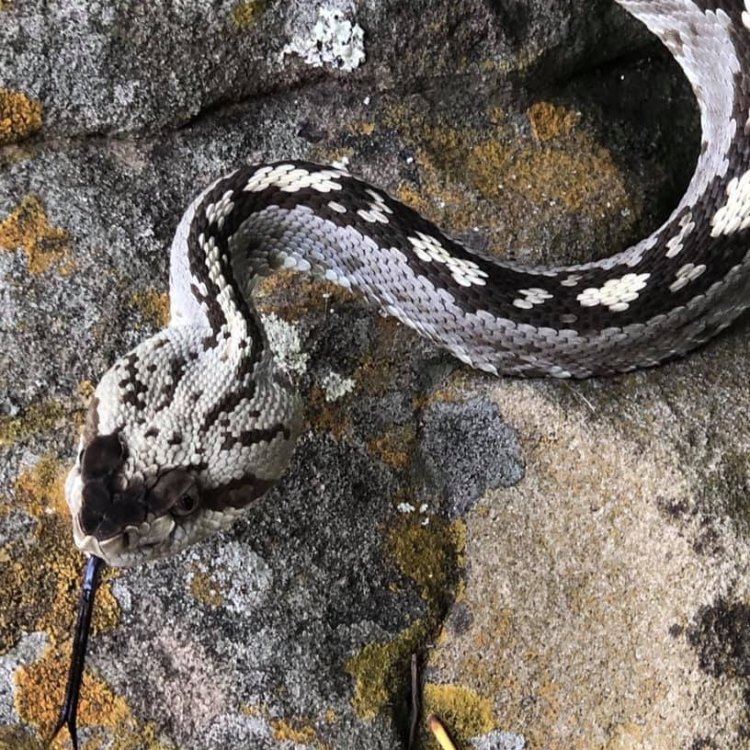
Ornate Black Tailed Rattlesnake
- Adult Size: 3 to 4 feet (0.9 to 1.2 meters)
- Average Lifespan: 10 to 15 years
- Reproduction: Sexual
- Reproductive Behavior: Mating occurs in the spring
- Sound or Call: Rattlesnake rattling sound
- Migration Pattern: Non-migratory
- Social Groups: Solitary
- Behavior: Nocturnal and secretive
- Threats: Habitat loss, fragmentation, and degradation; illegal collection for pet trade; persecution by humans
- Conservation Status: Near Threatened
- Impact on Ecosystem: Important role as predators in controlling small mammal populations
- Human Use: None
- Distinctive Features: Distinct black tail with white or light gray rattle
- Interesting Facts: The rattlesnake's rattle is composed of segments of keratin, the same material as human fingernails.
- Predator: Birds of prey, larger snakes, and mammals
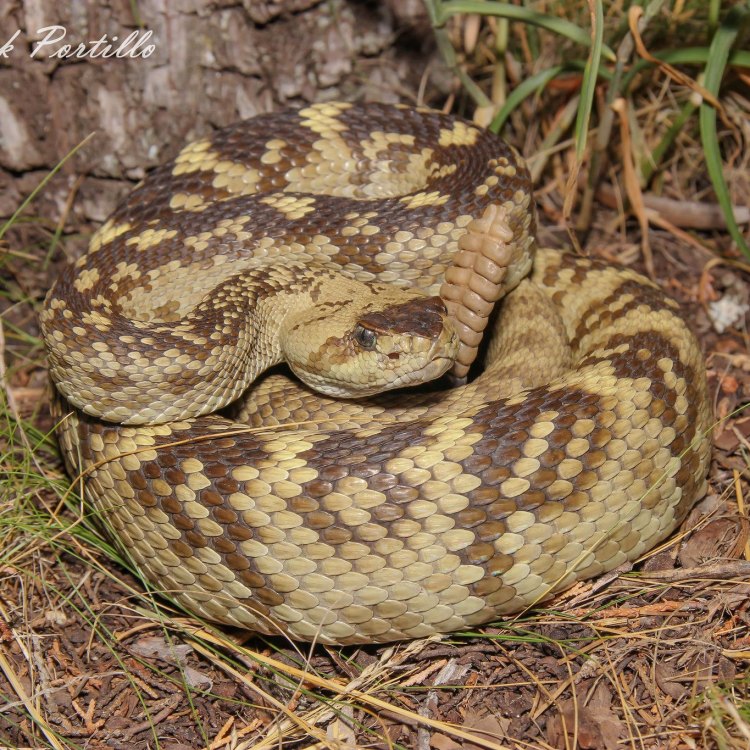
Crotalus ornatus
Meeting The Ornate Black Tailed Rattlesnake: A Hidden Predator Among Us
Imagine walking through a desert landscape and suddenly coming face to face with a sleek and menacing creature, decorated with intricate patterns of black and white scales. This is the ornate black tailed rattlesnake - a beautiful yet deadly predator that calls the arid regions of North America its home.The ornate black tailed rattlesnake, also known as Crotalus ornatus, is a species of rattlesnake found in the southwestern United States and northern Mexico. As their name suggests, they are known for their ornate appearance, with black bands and spots adorning their light gray or tan body PeaceOfAnimals.Com. However, don't let their striking appearance fool you - these snakes are not to be taken lightly.
Adult ornate black tailed rattlesnakes grow to be about 3 to 4 feet in length, making them relatively small compared to other rattlesnake species. They have a lifespan of 10 to 15 years, living a solitary and secretive life in the rocky outcrops and sandy dunes of their habitat.
Being a sexual species, reproduction for the rattlesnakes occurs in the spring. During this time, the males and females will engage in a ritualistic dance, known as the "rattlesnake mating dance," where they will intertwine and coil around each other before the male deposits his sperm.
One of the most distinctive features of the ornate black tailed rattlesnake is its iconic rattling sound. By shaking its tail, the snake creates a distinct rattling noise, warning potential threats of its presence. This sound is created by the segments of keratin, the same material as human fingernails, that make up the rattle. As the snake sheds its skin, the segments also shed, resulting in a higher number of segments and a louder rattling sound as the snake grows Olympic Marmot.
Despite their small size, these snakes play an important role in their ecosystem as predators. Their diet mainly consists of small mammals, such as rodents and rabbits, and they have been known to even prey on other snakes and birds. This makes them crucial in controlling the population of small mammals and keeping the balance in their habitat.
The ornate black tailed rattlesnakes are nocturnal creatures, meaning they are most active during the night. This further adds to their elusive nature, making them difficult to spot in the wild.
Unfortunately, these snakes face multiple threats in their natural habitat. Habitat loss, fragmentation, and degradation are major concerns for these snakes, as human development continues to encroach upon their homes. Illegal collection for the pet trade is also a significant threat, as many people find these snakes attractive and desire to keep them as pets. Furthermore, humans often persecute these creatures out of fear or misunderstanding.
Currently, the conservation status of the ornate black tailed rattlesnake is listed as "Near Threatened" by the International Union for Conservation of Nature (IUCN). This serves as a reminder that their population is declining, and immediate action needs to be taken to protect these fascinating creatures.
Although humans may fear and often mistreat rattlesnakes, it's essential to remember that these creatures play an integral role in their ecosystem. Their presence helps to maintain a healthy balance in their habitat, and without them, the ecosystem could face severe consequences.
The ornate black tailed rattlesnake is not a species with any known human use, and they should be left alone in their natural habitat. However, they do have an impact on human society as many people hunt and kill them out of fear or perceived danger.
Humans can safely coexist with the ornate black tailed rattlesnake by practicing caution and respecting their space. When hiking or exploring in known rattlesnake habitats, it's crucial to be aware of your surroundings and use precautions such as wearing sturdy boots, keeping a safe distance, and avoiding making sudden movements that may startle the snake.
The rattlesnakes' distinct black tail, adorned with white or light gray rattles, is one of the most recognizable features of this species. This tail is not only used as a warning system but can also be used as a weapon against predators. If threatened or provoked, the snake will shake its tail to create a rattling sound, while simultaneously coiling its body and striking out with its venomous fangs. For this reason, it's essential to give these snakes their space and not provoke them.
While the ornate black tailed rattlesnake may seem like a dangerous and fearsome predator, they are not without their predators. Birds of prey, larger snakes, and mammals, such as coyotes and foxes, are known to prey on these snakes. However, the rattlesnakes' excellent camouflage and elusive nature make them difficult to spot by their potential predators.
In conclusion, the ornate black tailed rattlesnake may be a hidden predator among us, but it's essential to understand and appreciate their place in their ecosystem. These beautiful creatures play a vital role in their habitat, and it's crucial to take steps to conserve and protect their population. By educating ourselves and practicing caution and respect around these snakes, we can ensure their continued existence and coexist with them peacefully.
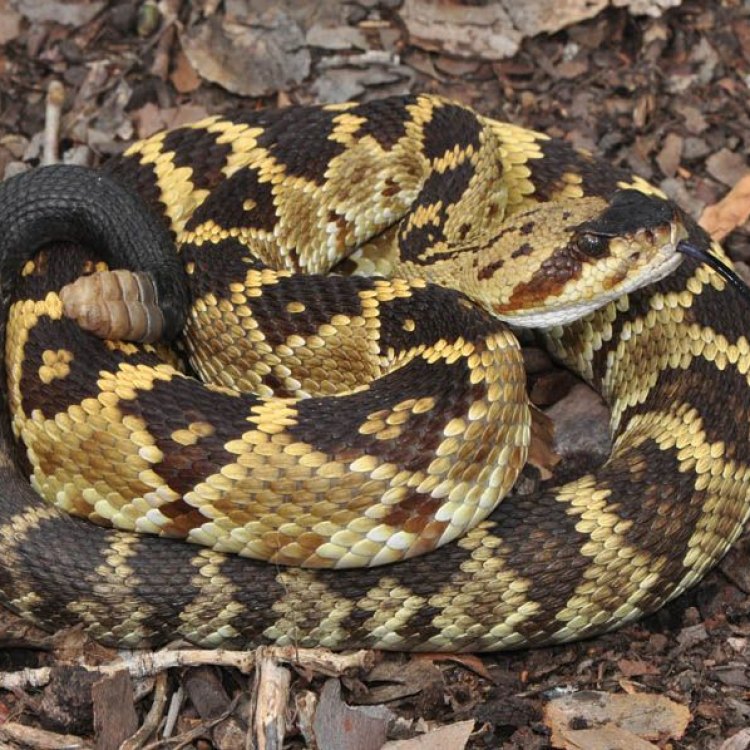
Unveiling the Stunning Beauty and Deadly Nature of the Ornate Black Tailed Rattlesnake
Disclaimer: The content provided is for informational purposes only. We cannot guarantee the accuracy of the information on this page 100%. All information provided here may change without prior notice.




